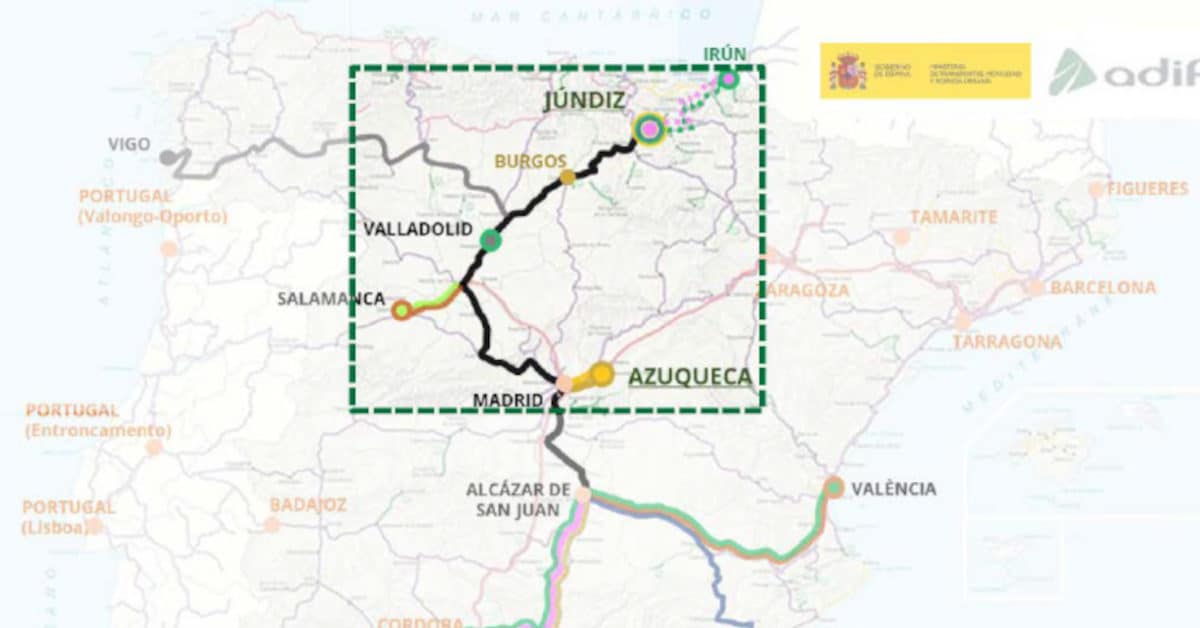Adif has concluded the gauge measurement and the socio-economic viability study of the future rolling highway service on the Azuqueca-Valladolid-Burgos-Júndiz axis, which confirms the feasibility of the project.
Following this step, the public company has started to contract the drafting of the necessary construction projects to adapt the infrastructure and allow the circulation of specialised wagons capable of transporting semi-trailers.
The inspections have detected 37 points requiring intervention, of which 29 correspond to tunnels. In these cases, the main solution will be to lower the track gradient by up to one metre to increase the useful height, allow the passage of large semi-trailers and ensure compliance with the required UIC gauges.
Actions to adapt the gauge for the Azuqueca-Valladolid-Burgos-Júndiz railway motorway
These actions involve complex work, including:
- Controlled excavation under the track, maintaining the structural safety of the tunnel.
- Renewal of the ballast layer and replacement of the superstructure, adapting it to the new elevation.
- Reinforcement of vaults and gables in masonry or masonry tunnels to absorb the new dynamic loads.
- Installation or relocation of drainage systems to prevent seepage after platform lowering.
- In some tunnels, modernisation of lighting and ventilation, as well as relocation of cabling and technical conduits.
In addition to the interventions in tunnels, the plan foresees the renovation of four overpasses, replacing decks, piers and abutments to increase the vertical gauge; and the adaptation of four other minor structures, including small subways and galleries.
The 528-kilometre route – practically all of it electrified and with double track – will allow, in the first phase, 18 weekly train services (nine in each direction).
This corridor belongs to the Atlantic Corridor of the Trans-European Transport Network (TEN-T) and is key to connecting the centre and south of the Iberian Peninsula with the north of Spain and Europe.
Connection to France, Valencia and Algeciras
The launch of this service will not only link with the Jndiz-Irún-French border rolling highway to the north and with the Zaragoza-Algeciras-Madrid rolling highway (with which it overlaps between Azuqueca and Vicálvaro) to the south but will also reinforce the east-west connection. It will link Castilla y León with Levante through the Madrid-Valencia rolling highway already in operation.
The rolling highway enables truck trailers to be loaded onto trains with the aim of promoting more sustainable transport and reducing the carbon footprint compared to road transport. Adif currently operates three AF routes and is developing more than twenty additional projects, driven by the high demand from logistics and port operators.
These works in 29 tunnels are the largest gauge upgrading operation on the conventional railway network in Spain in the last decades, and will be essential for the Azuqueca-Valladolid-Burgos-Júndiz axis to enter into service in a competitive and safe way.
